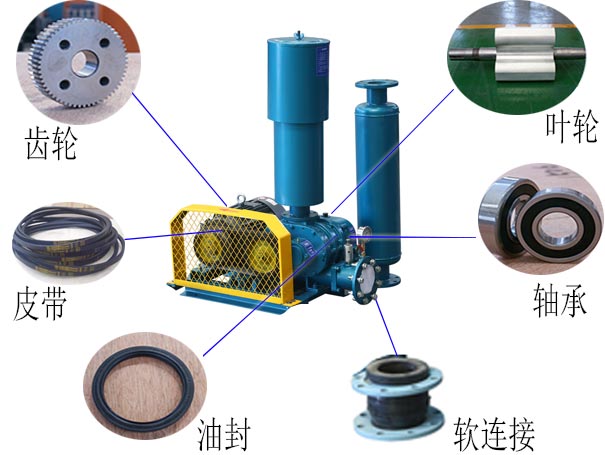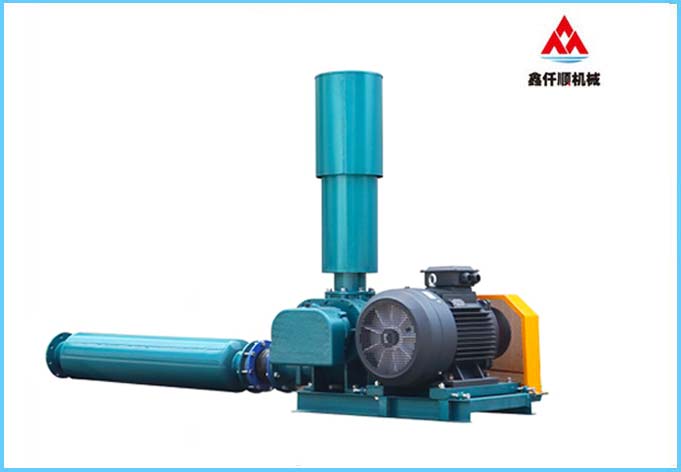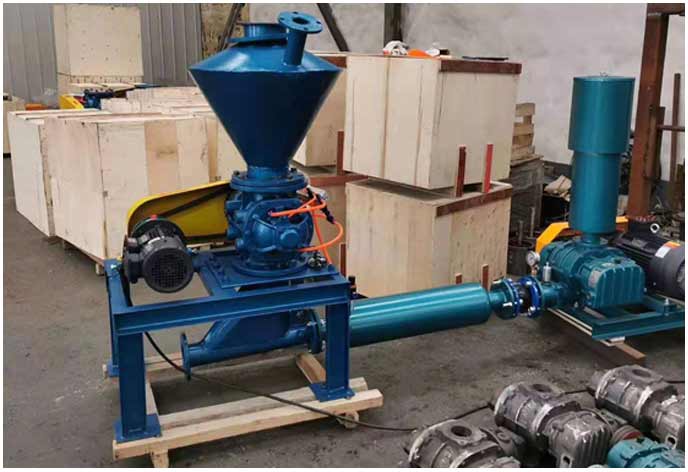Due to structural reasons, compared with other types of blower equipment, roots blower has a higher noise value. In order to reduce the impact of roots blower on the surrounding environment and reduce the noise value of roots blower, conventional roots blower will be equipped with silencers. The structure of silencers is different from each manufacturer, but their functions are basically the same.
Roots blower silencer/muffler is developed on the basis of sound barrier principle. This type of silencer has excellent acoustic performance and aerodynamic performance; The structure is reasonable and easy to install. It is a kind of honeycomb muffler with large air volume and resistance. The resistance section adopts the form of multi chamber resistant adhesive straight pipe channel and cross shaped sound absorber, thus ensuring sufficient noise reduction in a wide band. The silencer structure is composed of many parallel unit silencing tubes arranged, and porous sound absorbing materials are filled between silencing tubes. In order to reduce the radiated sound generated by the shell wall vibration excited by air flow, stiffeners are set on the shell. The forms of fan silencer, centrifugal fan silencer and blower and induced draft fan silencer are all based on the principle of resistive sound absorption and noise reduction with good effects on medium and high frequency broadband characteristics, the principle of resistant sound absorption and noise reduction with good effects on low, medium frequency and pulsating characteristics, and the principle of micro perforated silencer and impedance composite silencer.
The support of the silencer housing of Roots blower and the connecting parts with the housing shall have sufficient rigidity and strength, and the structural design shall be reasonable. It shall be able to withstand various additional forces such as exhaust reaction force, thermal expansion thrust, torque, and vibration force caused by high-speed steam flow with debris. The body shall be able to withstand various impacts caused by temperature and pressure changes. The integrity of the whole pipe shall be maintained after several quick opening and flushing operations.
Roots blower silencer is based on the principle of small hole pressure reduction and injection noise elimination. Through optimization design, its noise reduction index, safety performance and service life are far better than those of similar products on the market at present, and can better meet the requirements of low pressure, medium pressure, sub high pressure, high pressure, ultra-high pressure The exhaust steam (gas) of various boilers and pressure vessels with sub critical parameters, as well as the exhaust steam (gas) of safety valves and relief valves, are required to reduce noise.
The silencer of Roots blower is mainly made of superfine sound absorption glass wool with good sound absorption frequency performance and high temperature resistance, as well as foreign specially treated sound attenuation filter materials and other materials. The noise can be reduced by more than 30 dB through the silencer, which completely achieves the same effect of imported products. It is equipped with bypass safety valve, and the opening pressure is 2.0~2.2kgfm2. When the bypass safety valve is opened, the material of the silencer filter must be replaced before it can continue to be used. This series of products is suitable for supporting the dryer with 1.0MPa working pressure.
Noise source of Roots blower:
Roots blower contains a variety of noise sources, and its radiation noise parts mainly include:
(1) Aerodynamic noise radiated from air inlet and outlet;
(2) Mechanical noise radiated by the casing, electric actuator and bearing;
(3) Solid sound radiated by vibration of the root. Among these local noises, the aerodynamic noise radiated from the inlet and outlet parts (referred to as aerodynamic noise for short) is the strongest. Other noises such as mechanical noise and electromagnetic noise are unnecessary under the premise of normal operation of the fan. According to the spectrum analysis of the noise generated by Roots blower, it is characterized by low-frequency broadband. The aerodynamic noise of fan mainly consists of two parts: torsional noise and vortex noise. Torsional noise
Twisting noise is caused by the fact that the blades evenly spread on the task wheel attack the surrounding gas medium, causing the surrounding gas pressure pulsation. When air flows through the blades, a boundary layer is formed on the surface of the blades, especially the boundary layer on the suction side is easily thickened, and many vortices are generated. At the trailing edge of the blade, the boundary layer convergence platform of the suction side and the pressure side forms the so-called wake area. In the wake area, the pressure and velocity of the airflow are much lower than those in the main airflow area. Therefore, when the task wheel turns its elbow, the air flow in the blade outlet area is very uneven. This uneven air flow periodically affects the surrounding medium, causing pressure fluctuation and noise. The more uneven the air flow, the greater the noise. Eddy noise

Vortex noise is also called vortex noise or turbulence noise. It is mainly due to the turbulent boundary layer and vortex shedding when the air flows through the blade. It is caused by the pressure fluctuation on the blade. There are four reasons for its occurrence: First, after the turbulence boundary layer is formed by the air flow on the surface of the object, the pressure pulse of the disordered air flow in the boundary layer is applied to the internal and external surfaces of blades, volutes and some external surfaces, causing noise;
The second is that when the air flows through the object, because the boundary layer develops to a certain level, vortex shedding will occur, leaving the vortex will form a larger pulse;
The third reason is that the turbulence degree of the incoming flow causes the fluctuation of the blade effect force to form noise;
The fourth reason is the noise caused by the secondary vortex.
I believe that after reading the above content, we have a certain number of people about the structure and principle of Roots blower silencer. I hope it will be helpful to everyone.
Text term label: Roots blower










